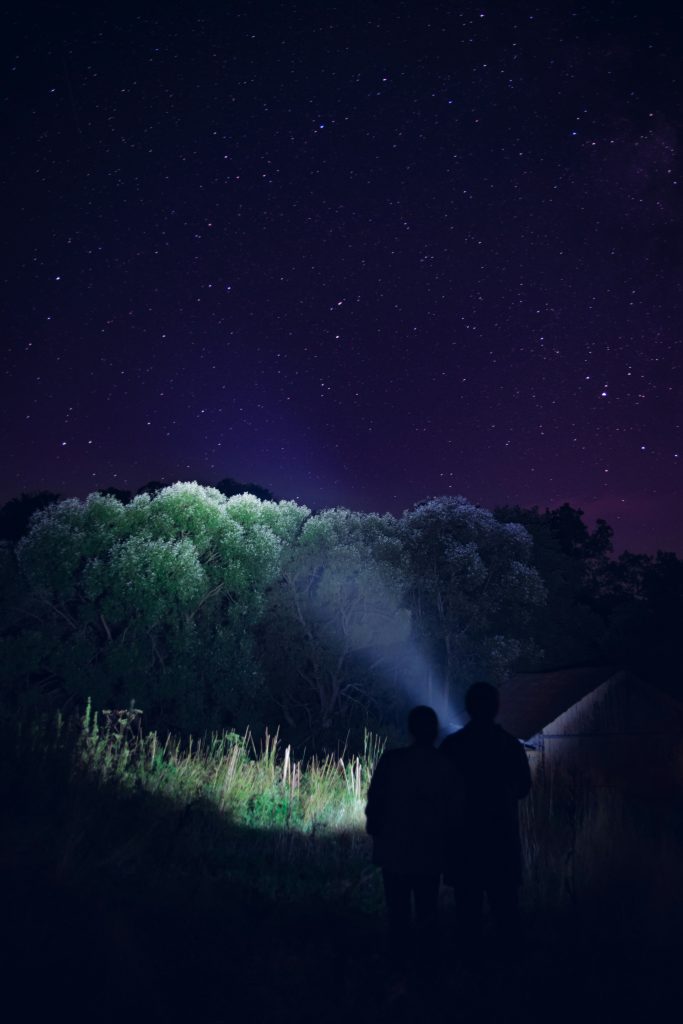A reliable flashlight is a non-negotiable piece of gear for any outdoor enthusiast. Whether you’re setting up camp after dark, navigating a trail at dusk, or handling an emergency, the right light provides safety, security, and freedom. But with hundreds of models boasting different lumens, beams, and battery types, choosing the best one can be a daunting task.
This 2025 guide will illuminate the key features you need to consider and shine a light on three of the top-rated outdoor flashlights based on real user experiences.

What to Look for in an Outdoor Flashlight
Navigating the specs of a flashlight is crucial to finding your perfect match. Focus on these five core features:
1. Brightness (Lumens)
Lumens measure the total quantity of visible light. While more lumens sound better, the right amount depends on your activity.
- 100-300 Lumens: Sufficient for camp tasks, reading in a tent, or walking on easy paths.
- 300-600 Lumens: A great all-purpose range for most hiking and backpacking needs.
- 600-1000+ Lumens: Ideal for search-and-rescue operations, navigating difficult terrain at high speed, or lighting up a large area.
2. Beam Distance and Type
How the light is projected is as important as how bright it is.
- Flood Beam: A wide, even light that illuminates a broad area immediately in front of you. Perfect for camp chores and close-range navigation.
- Spot Beam (Throw): A focused, long-distance beam that can reach far down a trail or across a canyon. Look for a beam distance measured in meters.
- Adjustable Focus: Many lights, like the J5 Hyper-Throw, offer a zoomable head to switch between flood and spot.
3. Battery Type and Runtime
Your power source dictates convenience and longevity.
- Rechargeable (Li-ion): The modern standard. Offers great power and the convenience of USB charging (via USB-C or Micro-USB). Environmentally friendly and cost-effective long-term.
- Disposable (Alkaline): Readily available but less powerful and environmentally wasteful. Performance drops significantly as the battery drains.
- Runtime: Check the manufacturer’s runtime graph. A good light will maintain a consistent output before gradually dimming, rather than shutting off abruptly.
4. Durability and Weather Resistance
Your light must withstand the elements.
- Construction: Aerospace-grade aluminum is common for its strength and light weight.
- IPX Rating: Look for a rating of IPX7 or IPX8, which means the light can be submerged in water (1 meter for 30 minutes or more), making it safe for heavy rain or accidental drops in water.
5. Usability and Features
Convenience features make a big difference when you need light fast.
- User Interface: Simple, intuitive buttons are key. A mode memory function that turns on in your last-used setting is highly valuable.
- Multiple Modes: Most lights offer several brightness levels, along with special modes like Strobe (for emergencies/signaling) and SOS.
- Compact Design: A light should feel comfortable in your hand and pack easily.

Top 2025 Outdoor Flashlight Picks from Amazon
After analyzing countless user reviews, here are three standout flashlights that deliver exceptional performance for different needs and budgets.
1. Olight Baton 4 Premium EDC Flashlight
A top-tier, feature-packed everyday carry (EDC) light for those who value smart design and maximum convenience.
- 👍 Pros:
- Unmatched Charging Convenience: The included Magnetic Charging Case acts as a power bank for the light, ensuring it’s always charged and ready to go. Users love never fumbling with cables .
- Compact & Powerful: Its small size belies a powerful output of up to 1,200 lumens, making it incredibly easy to carry every day .
- Smart User Interface: The side switch is easy to use, and the proximity sensor automatically lowers the brightness when close to an object to prevent burn risk or reflection .
- 👎 Cons:
- Premium Price: This is one of the more expensive EDC lights on the market, reflecting its advanced features and build quality .
- Proprietary Charging: The flashlight relies on Olight’s proprietary magnetic charging system, so if you lose the cable, a standard USB-C won’t work .
> > Check the Olight Baton 4 on Amazon
2. Anker Bolder LC90 Rechargeable Flashlight
A brilliant balance of high performance, rugged reliability, and exceptional value.
- 👍 Pros:
- Incredible Value: Consistently praised for offering features and performance of lights twice its price, including a max output of 900 lumens and a long beam distance .
- Versatile Power Options: It can be recharged via Micro-USB or run on 3x AAA batteries in a pinch, providing great flexibility in the field .
- Rugged and Weatherproof: With an IPX6 water-resistance rating and a durable body, it’s built to handle tough conditions, as confirmed by many user stories .
- 👎 Cons:
- Uses Micro-USB: In a world moving to USB-C, the Micro-USB port feels slightly outdated .
- Can Get Warm on High: Like most powerful lights, it can heat up when used on the highest setting for extended periods, which is normal but noted by users .
> > Check the Anker Bolder LC90 on Amazon
3. J5 Tactical Hyper-Throw V2-PRO Flashlight
A dedicated powerhouse for long-distance illumination, perfect for search and rescue or securing a large perimeter.
- 👍 Pros:
- Exceptional Long-Range Beam: The standout feature is its incredible beam distance, with users reporting it can effectively illuminate objects over 1,000 feet away, outperforming many competitors .
- Focused Adjustable Zoom: The smooth zoom function allows you to seamlessly transition from a wide floodlight to a pinpoint spotlight, making it incredibly versatile .
- Affordable Power: It provides specialized long-throw performance at a very accessible price point, amazing users with its capability for the cost .
- 👎 Cons:
- Less Practical for Close-Up Tasks: The beam is optimized for distance, not for wide, even lighting up close, making it less ideal as a general-purpose camp light .
- Battery Intensive: Achieving its high output drains batteries relatively quickly, so carrying spares is a must for prolonged use .